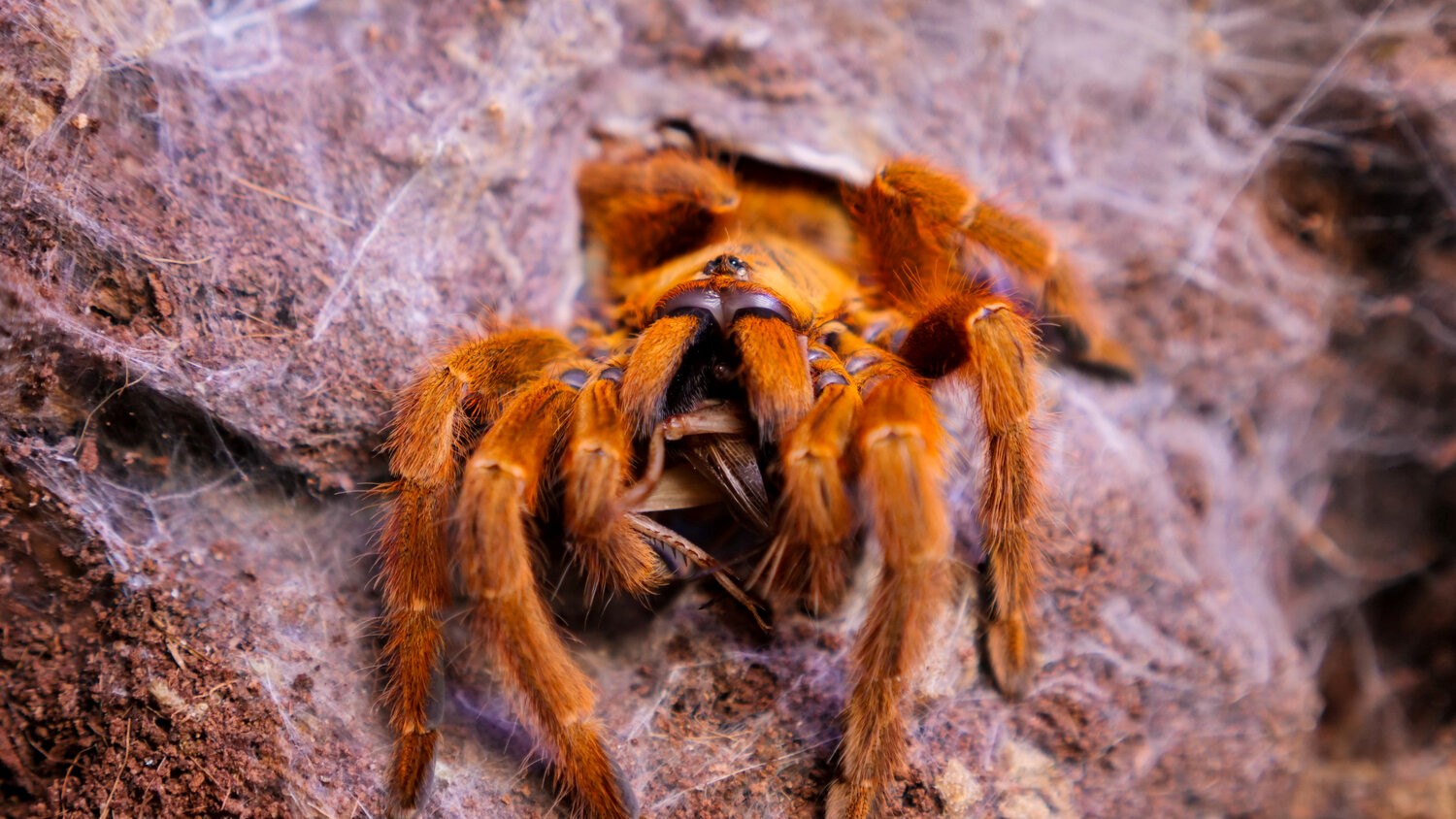
The Orange Baboon Tarantula is a fascinating creature that both captivates and terrifies. With its vibrant orange color and intimidating size, this tarantula is not one that easily goes unnoticed. Found in the tropical regions of Africa, specifically in countries like Kenya and Tanzania, the Orange Baboon Tarantula has become an object of intrigue for scientists and arachnid enthusiasts alike. In this article, we will delve into the world of this extraordinary species and uncover 11 fascinating facts that will leave you in awe of these unique creatures. From their impressive size and appearance to their intriguing behaviors and adaptations, get ready to discover the wondrous world of the Orange Baboon Tarantula.
Key Takeaways:
- The Orange Baboon Tarantula is a vibrant, arboreal species native to Africa, known for its impressive size, venomous defense, and unique mating rituals.
- With its striking orange color, venomous defense, and exceptional maternal care, the Orange Baboon Tarantula is a fascinating and resilient species that thrives in semi-arid habitats.
Vibrant Orange Coloration
The Orange Baboon Tarantula, also known as the OBT, gets its name from its vibrant orange coloration. This striking appearance makes it a popular choice among tarantula enthusiasts.
Native to Africa
The Orange Baboon Tarantula is native to Africa, specifically found in countries such as Tanzania, Kenya, and Uganda. It thrives in semi-arid habitats, including savannah grasslands and scrublands.
Impressive Size
With a leg span of up to 6 inches, the Orange Baboon Tarantula is considered one of the larger tarantula species. Despite their intimidating size, they are generally docile in nature.
Arboreal Lifestyle
The OBT is an arboreal species, meaning it spends a significant amount of time in trees and other elevated areas. It constructs elaborate silk-lined burrows in tree hollows or crevices to retreat to during rest periods.
Venomous Defense Mechanism
Like most tarantulas, the Orange Baboon Tarantula possesses venomous fangs. While its venom is not considered deadly to humans, it can cause pain and discomfort, similar to a bee sting.
Opportunistic Feeder
These tarantulas are opportunistic feeders, with their diet consisting of a variety of insects and small vertebrates. They are known to ambush their prey by lunging out from their burrows.
Unique Defensive Behavior
When threatened, the Orange Baboon Tarantula displays a unique defense mechanism known as “kicking hairs.” It releases specialized abdominal hairs that can irritate and deter potential predators.
Hardy and Resilient
The OBT is a hardy and resilient species, capable of adapting to various climatic conditions. It can withstand both extreme heat and severe drought, making it well-suited to its arid habitat.
Mating Rituals
During mating rituals, the male Orange Baboon Tarantula performs a complex dance to attract the female’s attention. If successful, the male deposits a sperm web for the female to fertilize her eggs.
Maternal Care
The female OBT exhibits exceptional maternal care, keeping a close watch over her egg sac and spiderlings. She defends and nurtures them until they are old enough to venture out on their own.
Lifespan and Longevity
The Orange Baboon Tarantula has an average lifespan of 5 to 10 years in captivity. However, with proper care and conditions, some individuals have been known to live up to 15 years.
Conclusion
The orange baboon tarantula is truly an extraordinary creature. With its vibrant orange coloration, impressive size, and fascinating behaviors, it captivates the attention of both tarantula enthusiasts and casual observers alike. From its unique hunting techniques to its incredible ability to regenerate limbs, the orange baboon tarantula is a marvel of the animal kingdom.
Whether you’re interested in tarantulas as pets or simply intrigued by these amazing arachnids, the orange baboon tarantula is a species worth learning about. Its adaptability, striking appearance, and intriguing behaviors make it a fascinating topic of study. So, the next time you come across an orange baboon tarantula, take a moment to appreciate the extraordinary beauty and wonder of this incredible creature.
FAQs
1. Are orange baboon tarantulas dangerous?
While orange baboon tarantulas can deliver a painful bite, their venom is considered to be moderately toxic, similar to a bee sting. However, their primary defense mechanism is kicking irritating urticating hairs, which can cause skin and eye irritation.
2. How large do orange baboon tarantulas grow?
Orange baboon tarantulas are known to reach a leg span of around 6 inches (15 centimeters) when fully grown, making them one of the larger tarantula species.
3. What do orange baboon tarantulas eat?
These tarantulas are carnivorous and mainly feed on insects such as crickets, roaches, and grasshoppers. They are also known to eat small vertebrates like mice or lizards in the wild.
4. How long do orange baboon tarantulas live?
On average, orange baboon tarantulas have a lifespan of 10 to 15 years in captivity. However, in the wild, their lifespan may be shorter due to various factors such as predation and environmental conditions.
5. Can orange baboon tarantulas be kept as pets?
Yes, orange baboon tarantulas are popular as pets among tarantula enthusiasts. However, they require special care and should only be kept by experienced spider keepers due to their defensive behaviors and specific environmental needs.
Was this page helpful?
Our commitment to delivering trustworthy and engaging content is at the heart of what we do. Each fact on our site is contributed by real users like you, bringing a wealth of diverse insights and information. To ensure the highest standards of accuracy and reliability, our dedicated editors meticulously review each submission. This process guarantees that the facts we share are not only fascinating but also credible. Trust in our commitment to quality and authenticity as you explore and learn with us.
